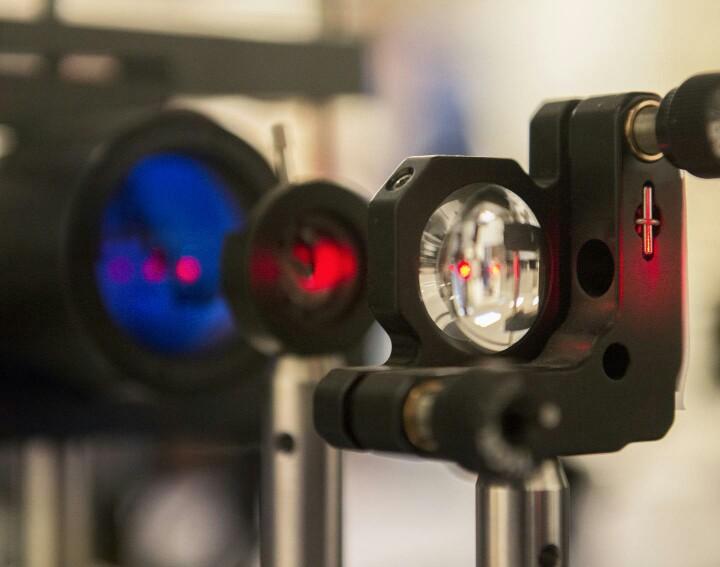Infrared links simplify data center communications

Data centers are the central point of many, if not most, information systems today, but the masses of wires interconnecting the servers and piled high on racks begins to resemble last year's tangled Christmas-tree lights disaster. Now a team of engineers is proposing to eliminate most of the wires and substitute infrared free-space optics for communications.
"We and others tried radio frequency signaling, but the beams become wide over short distances," said Mohsen Kavehrad, W. L. Weiss Chair Professor of Electrical Engineering, Penn State. "The buildings could be a mile long and every rack should be able to communicate."
In an experiment conducted by Microsoft engineers, researchers found that radio-frequency signaling resulted in high interference, limited active links and limited throughput -- the amount of data that can go through a system.
"We use a free space optical link," Kavehrad told attendees today (Jan. 31) at Photonics West 2017 in San Francisco. "It uses a very inexpensive lens, we get a very narrow infrared beam with zero interference and no limit to the number of connections with high throughput."
The Free-space optical Inter-Rack nEtwork with high FLexibilitY -- or Firefly -- architecture is a joint project of Penn State, Stony Brook University and Carnegie Mellon University. It would use infrared lasers and receivers mounted on top of data center racks to transmit information. The laser modules are rapidly reconfigurable to acquire a target on any rack. Human interference is minimal because the racks are more than 6.5 feet high so most workers can walk between the rows of racks without breaking the laser beams.
According to Kavehrad, data centers may house 400,000 servers on racks filling a mile-long room. Data centers typically build for peak traffic, which means that most of the time about 30 percent of servers are offline. However, because they are still on, they continue to create heat and need cooling. Kavehrad estimates that by 2020, data centers will use a total of 140 billion kilowatts of electricity per hour, or the equivalent of $13 billion worth of electricity at today's rate -- the output of 50 power plants.
While fiber-optic cabling and energy expenditure for idle servers are problems, throughput is more critical. When hundreds of cables merge into a few, the data transfer bottlenecks that result reduce the speed at which the data center can deliver information. A flexible, configurable system can reduce bottlenecks and even the number of servers needed.
The researchers have designed the Firefly architecture, but it is not yet implemented. They have created a simplified, proof-of-concept system to show that their infrared laser can carry the signal and target the receiver. They are transmitting wavelength division multiplexed -- multiple signals sent by different colored lights -- bi-directional data streams each carrying data at a transmission rate of 10 Gigabits per second from a Bit Error Rate (BER) test set. BER testing determines the number of errors in a signal caused by interference, noise, distortion or sychronization problems.
The proof of concept setup has the bidirectional signal wavelength division multiplexed with a one-way cable television signal. The total data stream goes from fiber-optic cable to the infrared laser, across the room to the receiver and shows the results on a TV and the BER test set. A hand breaking the laser beam shuts off the system, but when the hand is removed, the signal is rapidly reacquired.
The system uses MEMs --microelectromechanical systems -- with tiny mirrors for rapid targeting and reconfiguring, Kavehrad said. These MEMs use tiny amounts of electricity from four directions to reposition the mirror that targets the receiver. The movement of the mirrors is so small it is undetectable, but the computer program quickly locates the receiver and then narrows the target to pinpoint accuracy. The laser beam can also be rapidly moved to target a different receiver.
Accurately targeting and sending a signal via infrared laser are only two of the hurdles the researchers need to pass before Firefly is operational. Once the signal arrives at the target it must seamlessly enter the fiber-optic cable. Controlling and managing the data distribution system in an unwired environment is also important.
"We are trying to come up with something reconfigurable using light instead of millimeter waves (radio frequency)," said Kavehrad. "We need to avoid overprovisioning and supply sufficient capacity to do the interconnect with minimal switches. We would like to get rid of the fiber optics altogether."
